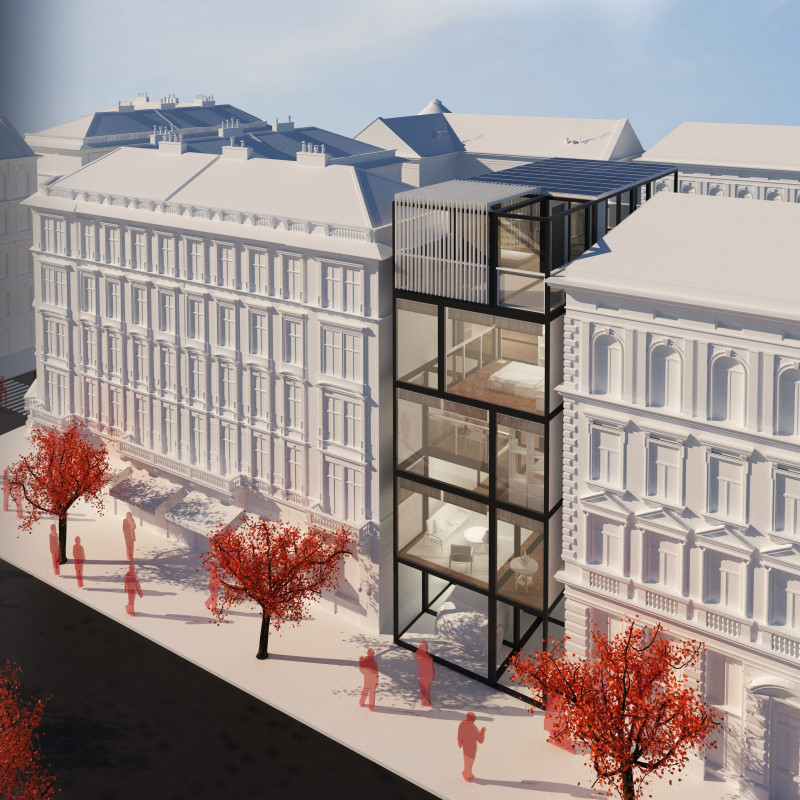5 key facts about this project
The Interstice project offers a practical solution to the challenges of living in a crowded city. Located in an area like Paris, the design focuses on fitting within the spaces found between existing buildings. By doing so, it aims to create usable homes that respond to the needs of urban life. The overall concept revolves around modular construction, allowing for flexibility in the design while addressing housing shortages in a smart way.
Architecture Concept
The building features a narrow and elongated shape, making the most of limited space. It consists of two types of modules: a small size at 1.6m x 3.2m and a larger option measuring 3.2m x 3.2m. These modules are made in a factory and can be assembled on-site, which makes them easy to customize for varying resident needs. This design approach helps in creating an efficient living environment that can adapt as necessary.
Spatial Arrangement
Inside, the layout is organized and accessible, promoting easy movement throughout the building. Key areas include communal spaces for interaction and private rooms for quiet. The arrangement includes essential features like living areas, a gallery kitchen, bedrooms, guest bathrooms, and storage, forming a functional and comfortable home for those living there.
Urban Integration
The design aims to tackle land use challenges in urban neighborhoods that have developed over time. By utilizing space that might otherwise go unused, it helps address housing shortages while breathing new life into the urban landscape. The modular construction technique plays a crucial role in this response, providing an efficient way to meet the demand for housing while respecting the surrounding environment.
Design Detail
A noteworthy feature of the building is its balcony that extends from the living space, offering residents a personal outdoor area. This element adds to the visual appeal and fosters a connection to the bustling city outside. It also creates a practical space for relaxation, enriching the living experience and making urban life more enjoyable.






















































